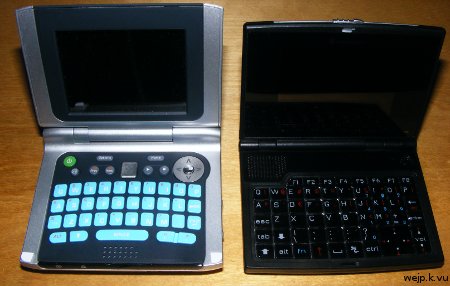It's been a while since my last entry, so here is a little something. As requested, here is a little Ben NanoNote vs. Zipit Z2 comparison.

The machines have both a very similar shape and size and their specifications are also not too different. While the Ben NanoNote was meant to be Open Source hardware the Zipit Z2 was built as an instant messaging device for teenagers and was then repurposed by the hacker/free software community as a more or less general purpose Linux computer.

The machines have both a very similar shape and size and their specifications are also not too different. While the Ben NanoNote was meant to be Open Source hardware the Zipit Z2 was built as an instant messaging device for teenagers and was then repurposed by the hacker/free software community as a more or less general purpose Linux computer.
Both devices come with 32 MB of RAM and a 320x240 color screen (LCD) with an identical size.
While the NanoNote uses a 336 MHz MIPS-compatible SoC (Ingenic JZ4720), the Z2 uses an 312 MHz ARM9 SoC (Marvell PXA270).
Apart from its Micro SD card slot and three test points that expose a serial port under the battery, the NanoNote lacks any kind of connectivity. The Z2 on the other hand comes with internal WiFi and a somewhat obscure extension port on the back that exposes USB host and some other things.
Even though the Nanonote does not come with many interfaces to the outside world, members of the community still try to build hardware for the NanoNote. One pretty impressive little extension is the UBB-VGA that uses the micro sd slot to output a high resolution VGA signal.
Apart from its Micro SD card slot and three test points that expose a serial port under the battery, the NanoNote lacks any kind of connectivity. The Z2 on the other hand comes with internal WiFi and a somewhat obscure extension port on the back that exposes USB host and some other things.
Even though the Nanonote does not come with many interfaces to the outside world, members of the community still try to build hardware for the NanoNote. One pretty impressive little extension is the UBB-VGA that uses the micro sd slot to output a high resolution VGA signal.
